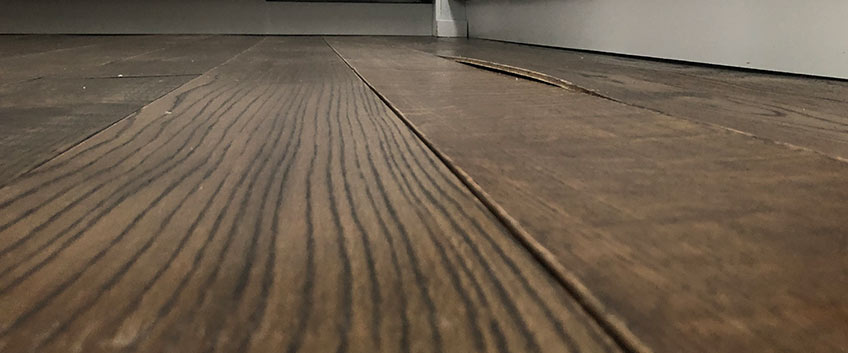
One of the most important factors that affect a successful and efficient wood floor fitting that guarantees a strong, solid, durable, and hard-wearing wooden floor that will last for years is the content of moisture and humidity in the indoor air on-site. Standard and even lower moisture and humidity on-site are important for achieving the smooth fitting of the floorboards and a wooden floor that ensures structural integrity and guarantees longevity and years of loyal service to the owners. Unfortunately, many factors and aspects can have an impact on the indoor moisture levels on-site and increase them to the point that current and future issues with the installation process and the floor itself can occur. Improper usage, inoperable systems, and inadequate HVAC systems can be a major part of the problem overall.
Moisture and humidity affect the whole process of the installation of the wooden floor. When there are excessive levels of moisture on site, this can have a major impact of the fitting process and also the condition of the floorboards. Unfortunately, excessive moisture can be found everywhere – contained by the indoor air, in the subfloor, especially when it comes to a concrete subfloor, in the floorboards themselves, especially when not enough time is left for their acclimatisation. Moisture will then continue to affect the floor if not taken care of. It can lead to a significant expansion and contraction of the floorboards, as this is the natural response of wood’s porous structure to increased moisture and humidity levels.
This movement of the floorboards may be a cause for several serious issues, including cupping and ballooning of the floorboards, warping and deformation of their edges, broken floorboards, chipped finish, loose and noisy floor, etc. To prevent all that and ensure your floor is in perfect condition for many years, it is highly advisable to check moisture content and levels and make sure they are kept within the recommended limits. Since a major reason for increased moisture and humidity levels can be an HVAC system that can create the so-called greenhouse effect, it is also highly recommended to pay attention to how the system is working and if it is proper before and during the process of installation of the floorboards. Here are some general guidelines you can follow to minimise all concerns and risks.
- If it comes to a humid season of the year or a country with a more humid climate, it may be necessary to ensure an additional dehumidifying system in case the air conditioner is not able to control the RH levels within the property and keep them below the average 50%.
- When it comes to dryer seasons and climates, where the average RH is naturally below 30%, you don’t necessarily need additional humidification to sustain good RH levels.
- There are rooms, where the HVAC vents are closed off and the vents are not conditioned to the same temperature and humidity levels compared to the rest of the space. In such cases, this may result in different sub-climates within the property or facility. This effect can have adverse effects and impact on the installation of different floors on the site of the facility.
- In some cases, the HVAC systems such as air conditioners and heating systems may not be used at all or be shut down for an extended period. In such cases, the air exchange necessary for the performance of the facility and the wood floor will be lacking. Direct sunlight entering the facility through the windows can generate excess heat and by this create abnormal indoor humidity levels, which will probably fluctuate in the different parts of the day and night. Due to this effect, the floorboards may start expanding and shrinking. Therefore, it is crucial to make sure the conditions and indoor atmosphere of the room are all under good control before and during the installation process to avoid a list of issues and problems with the process and the durability of the floor.